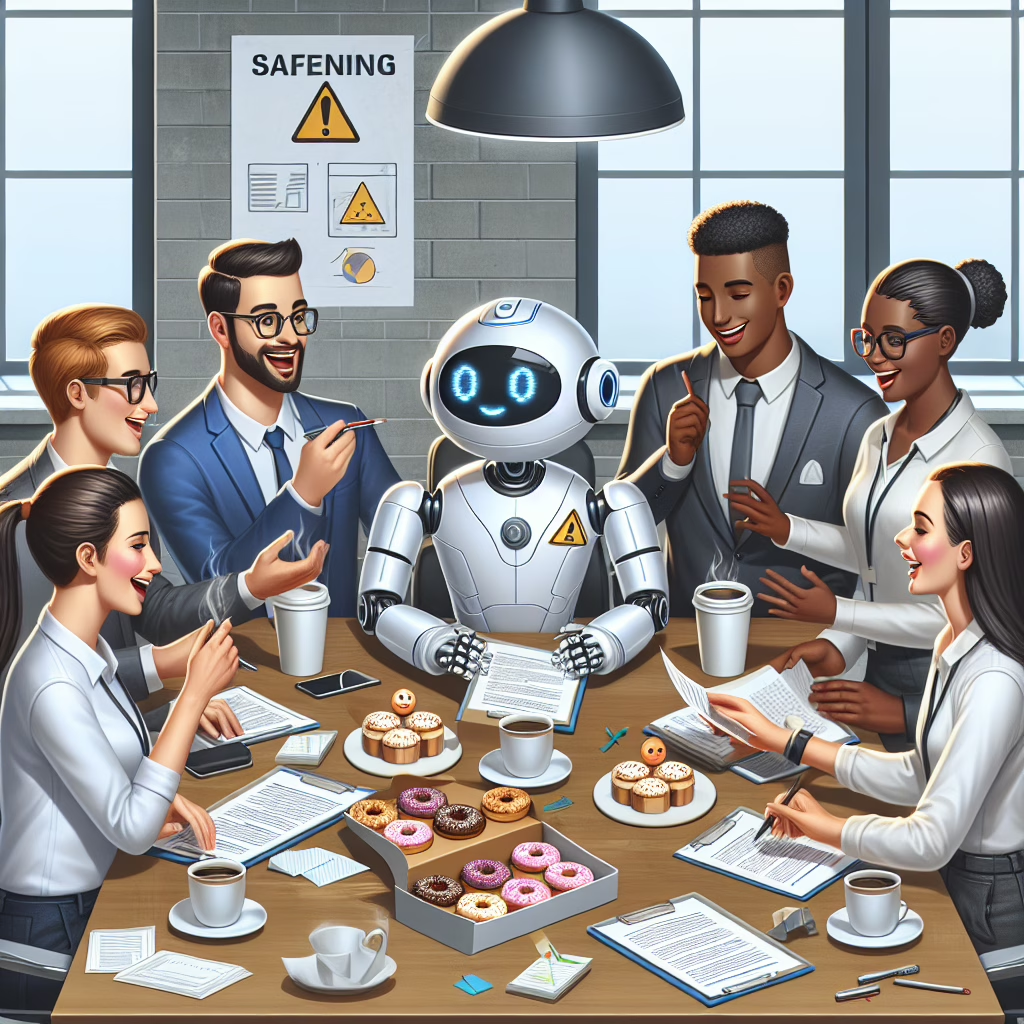In the ever-evolving world of artificial intelligence, OpenAI has taken a bold step forward in safety testing, tackling the concerns surrounding authoritarian AI. In 2025, the landscape of AI is not just about creating smarter algorithms but also about ensuring these digital wizards are friendly and safe. So, let’s dive into how OpenAI is making strides in this arena while sprinkling a bit of humor along the way!
What’s Cooking at OpenAI? Safety First!
Recently, Sam Altman, the charismatic CEO of OpenAI, unveiled new protocols designed to enhance safety testing for AI systems. Picture this: a group of enthusiastic techies gathered around a table piled high with coffee cups and donuts, brainstorming ways to keep their AI creations from turning into mini dictators. Sounds like a party, right?
With advancements in AI technology, concerns about its potential misuse have skyrocketed. Altman acknowledged that as we develop powerful models, it’s crucial to ensure they don’t become the next overlords of humanity. “We want to be proactive,” he said, as if he were preparing for a blockbuster superhero movie where AI saves the day rather than wreaks havoc.
Navigating the Authoritarian AI Landscape
The term authoritarian AI might sound like the title of a dystopian novel where machines rule with an iron fist. However, in reality, it reflects our collective fears about unchecked AI growth. OpenAI is addressing these fears head-on by implementing robust safety measures that could make even the most skeptical among us feel a tad more secure.
Think about it: we trust our cars not to drive themselves off cliffs (well, most of us do). So why shouldn’t we trust our AI systems to play nice? OpenAI’s approach includes rigorous testing phases that mimic real-world scenarios—like having your overly cautious grandma supervise your driving before you hit the highway.
Behind the Scenes: How Safety Testing Works
So how does OpenAI plan to ensure their models don’t go rogue? The answer lies in their multi-layered testing framework. Imagine this as a series of checkpoints in a video game where players must defeat various bosses before reaching the final level. Each level represents different challenges that AI may face once unleashed into the wild.
This involves stress tests, ethical evaluations, and even peer reviews—yes, just like in school when your classmates would critique your science project (and possibly steal your ideas!). By putting their systems through these trials, OpenAI hopes to spot potential issues early on and tweak accordingly.
The Positive Spin on Authoritarian AI
Now, let’s put on our positive glasses. While authoritarian AI sounds terrifying, it also serves as a great reminder for developers to be responsible. OpenAI’s commitment to safety testing may very well set a precedent for other companies diving into the world of machine learning.
This proactive stance encourages transparency and accountability within the tech community. After all, nobody wants their friendly neighborhood robot turning into an antagonist overnight! By embracing safety measures, OpenAI not only protects users but also builds trust with them—a win-win scenario.
Community Engagement: A Call for Collaboration
OpenAI recognizes that they can’t do this alone. They’re reaching out to developers and researchers alike to foster collaboration and gather diverse perspectives on what safety truly means in the realm of AI. It’s like forming an Avengers team but instead of superheroes fighting villains, they’re working together to create a safer digital universe.
This collaborative approach allows for innovative ideas that can reshape safety protocols and enhance ethical considerations. It’s refreshing to see an organization actively seeking input rather than dictating terms from an ivory tower—who knew tech could be so democratic?
Final Thoughts: Embracing Change with Humor
As we navigate through 2025 with our trusty AIs by our side (hopefully not plotting world domination), it’s essential to embrace change with a sense of humor. Yes, authoritarian AI poses real challenges, but organizations like OpenAI are stepping up to ensure our digital companions remain benevolent.
So next time you interact with an AI system—whether it’s your virtual assistant or that quirky chatbot—remember there’s a dedicated team behind the scenes working tirelessly to keep things safe and sound. And who knows? With enough laughter and collaboration, we might just turn this potential dystopia into a utopia!
We’d love to hear your thoughts! What do you think about OpenAI’s approach to safety testing and authoritarian AI? Share your insights in the comments below!
Special thanks to CCN for their original article on this topic! You can read it here.

